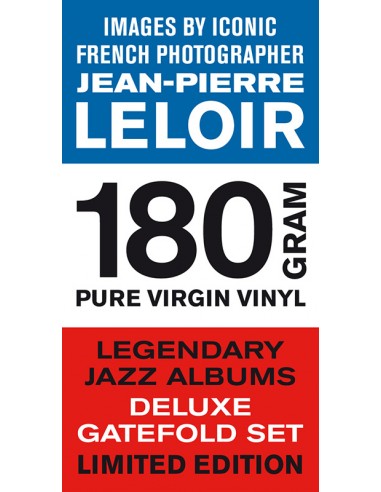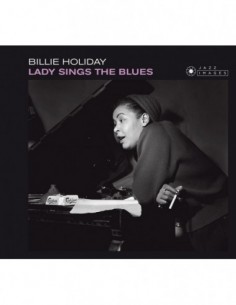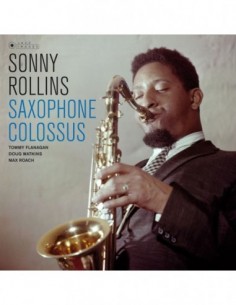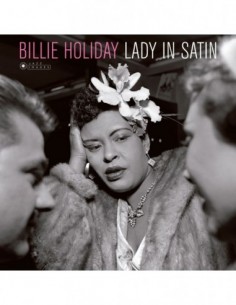Autumn Leaves
Miles DavisTHE JEAN-PIERRE LELOIR COLLECTION
180 PRE VIRGIN VINYL LPs IN GATEFOLD PACKAGING
INCLUDES 1 BONUS TRACK
The great Miles Davis made his first trip to Europe in 1949 with the Tadd Dameron band. “Tadd and I took a group to Paris, France”, explained Miles. “This was my first trip out of the country and it changed the way I looked at things forever. I loved being in Paris and loved the way I was treated. I had bought me some new suits that I had made, so I know I was together, man. That’s where I met Jean-Paul Sartre and Pablo Picasso and Juliette Gréco. I have never felt like that in my life since. When I got ready to leave, there were a lot of sad faces at the airport, including mine. Man, I was so depressed coming back to this country on the plane that I couldn’t say anything all the way back.”
The great French singer Juliette Gréco had a lot to do with Miles’ feelings, for both fell deeply in love. “Sartre asked Miles why we didn’t get married”, she explained, “but Miles loved me too much, he said, to marry me. You’d be seen as a ‘negro’s whore’ in the US, he told me, and this would destroy your career. We saw each other regularly until his death. He was one of the most elegant men I have known.”
While Miles and Juliette never got to record together, this album showcases two wonderful Jean-Pierre Leloir pictures of them in Paris and presents a selection of Miles’ best recordings. The trumpeter’s version of “Autumn Leaves” [Les Feuilles Mortes] – the only song recorded by both Miles and Juliette – opens Side A, while Gréco’s reading of the tune closes Side B as a bonus.
PERSONNEL:
A1: MILES DAVIS, trumpet; JULIAN “CANNONBALL” ADDERLEY, alto sax;
HANK JONES, piano; SAM JONES, bass; ART BLAKEY, drums.
Hackensack, New Jersey, March 9, 1958.
A2: MILES DAVIS, trumpet; BARNEY WILEN, tenor sax; RENÉ URTREGER, piano;
PIERRE MICHELOT, bass; KENNY CLARKE, drums.
Paris, December 4 & 5, 1957.
A3: MILES DAVIS, trumpet; BETTY GLAMANN, harp; EDDIE COSTA, vibes; BILL EVANS, piano; BARRY GALBRAITH, guitar;
PAUL CHAMBERS, bass; KENNY DENNIS, drums;
MICHEL LEGRAND, arranger & conductor.
New York, June 25, 1958.
A4: MILES DAVIS, trumpet; CANNONBALL ADDERLEY, alto sax;
JOHN COLTRANE, tenor sax; BILL EVANS, piano;
PAUL CHAMBERS, bass; JIMMY COBB, drums.
New York, May 26, 1958.
B1: MILES DAVIS, trumpet; CANNONBALL ADDERLEY, alto sax;
JOHN COLTRANE, tenor sax; RED GARLAND, piano;
PAUL CHAMBERS, bass; PHILLY JOE JONES, drums.
New York, February 4, 1958.
B2: MILES DAVIS, trumpet; BRITT WOODMAN, trombone;
TEDDY CHARLES, vibes; CHARLES MINGUS, bass; ELVIN JONES, drums.
New York, July 8, 1955.
B3: Same personnel as B1 except Cannonball Adderley omitted.
New York, September 10, 1956.
*Bonus track (B4): JULIETTE GRÉCO, vocals.
Orchestra conducted & arranged by ANDRÉ GRASSI.
Paris, France, October 1951.
SIDE A:
01 AUTUMN LEAVES [LES FEUILLES MORTES]
02 NUIT SUR LES CHAMPS-ÉLYSÉES
03 DJANGO
04 STELLA BY STARLIGHT
SIDE B:
01 MILESTONES
02 NATURE BOY
03 ‘ROUND MIDNIGHT
04 AUTUMN LEAVES [LES FEUILLES MORTES] (*)
- Format
- LP
- Discs
- 1
- Label code
- 37055
 Cookie preferences
Cookie preferences






















































